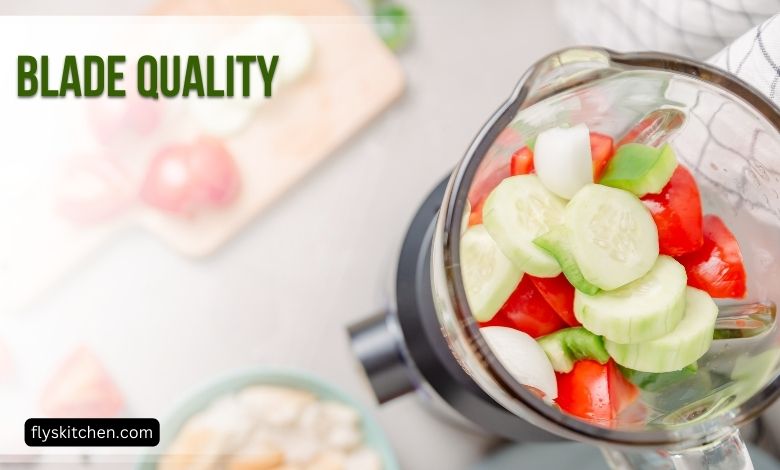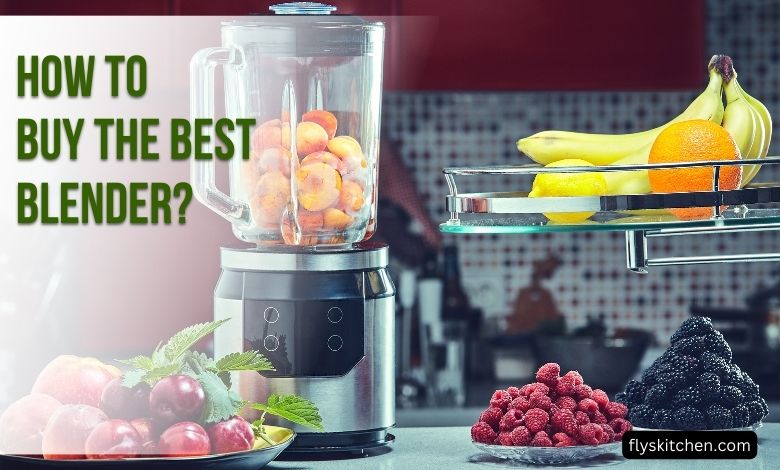A high-quality blender is an indispensable tool in any modern kitchen. From smoothies to soups, a good blender can make food prep easy and enjoyable. With so many models on the market ranging widely in price and features, it can be tricky to determine which blender is really the best for your needs. This comprehensive guide will walk you through what to look for when shopping for a blender, from blade power to container size and other key factors. Follow these tips to find the perfect blender for your kitchen and budget.
Introduction
Having the right blender can be a game-changer in the kitchen. No longer will you have to suffer through chunky smoothies or laboriously puree soups by hand. With a powerful blender, you’ll breeze through food prep tasks like crushing ice, making nut butter, and blending creamy soups. Blenders have come a long way from the old-fashioned drink mixers of the past. Now, high-speed blenders can finely grind seeds and pulverize tough greens and frozen ingredients in seconds.
But with so many models and features available, how do you decide what blender is best for your needs? By factoring in blade power, capacity, speed settings, ease of use, noise level, and other key criteria, you can zero in on the perfect machine. Whether you’re a smoothie enthusiast, budding chef, or love whipping up big batches for the whole family, there is a great blender out there to match your purposes and budget.
This comprehensive guide will walk you through the features to look for when comparing blenders. You’ll learn blender lingo, understand key differences between types of blenders, and get tips for maximizing your machine. Let’s dive in to find the best blender for you!
Blender Power
One of the most important factors when selecting a blender is its power, which is measured in watts or horsepower. More powerful motors spin blades faster to pulverize and puree ingredients more efficiently. Most standard blenders range from 300 to 1500 watts, while high-performance blenders are typically 1500 watts or higher.
According to industry experts, aim for a minimum of 500 watts for reliable performance. 1000+ watts is ideal for tough ingredients like ice, frozen produce, nuts, and seeds. Higher-wattage blenders will give you silky smoothies, crushed ice drinks, and perfectly pureed soups in a matter of seconds. Leading brands like Vitamix and Blendtec are known for their powerful motors of 1500-1700+ watts.
For moderate usage, a blender in the 500-700 watt range should meet basic needs. Look for at least 1000 watts if you plan to blend daily or tackle harder ingredients regularly. The motor power is directly tied to the blender’s ability to pulverize, so don’t underestimate the importance of wattage.
Blade Quality

The blades are the business end of the blender, directly chopping and mixing your ingredients. Quality blade design is essential for efficient blending performance. Look for aircraft-grade stainless steel blades that will retain their sharp edges. Blades should be able to pulverize ice, frozen produce, nuts, and fibrous materials with ease.
Sturdy blades won’t bend, warp, or dull easily. Blenders usually have between 3-6 blades arranged in various patterns. Different brands engineer specialized blade designs they claim improve blending action. For example, Vitamix’s aircraft-grade metal blades have patented curved shapes and cutting planes to handle hot soups or thick batters.
Some blenders also boast “extractor” blades that are precisely designed to pull produce against the container walls to thoroughly pulverize it. Test blenders with ice crushing and green smoothies to see how well the blades perform. Superior blade strength and engineering translate to smooth textures without annoying chunks or unblended bits.
Speed Settings
Variable speed settings give you greater control when blending different consistencies or batches. Look for a blender with at least 3 speeds, ranging from a low mix setting to high pulverize. This allows you to stir chunky salsas on low, puree soups on medium, and crush ice into snow on high.
Pre-programmed settings take the guesswork out of preparing smoothies, juices, nut butters, batters, and more. Blenders like Vitamix offer settings for hot soups, frozen desserts, nut butters, and other specific functions that automatically adjust blending times and speeds. This makes it easy to achieve perfect results with the touch of a button. Models with both variable manual speeds and specialized presets offer the greatest flexibility and ease of use for novice and pro users alike.

